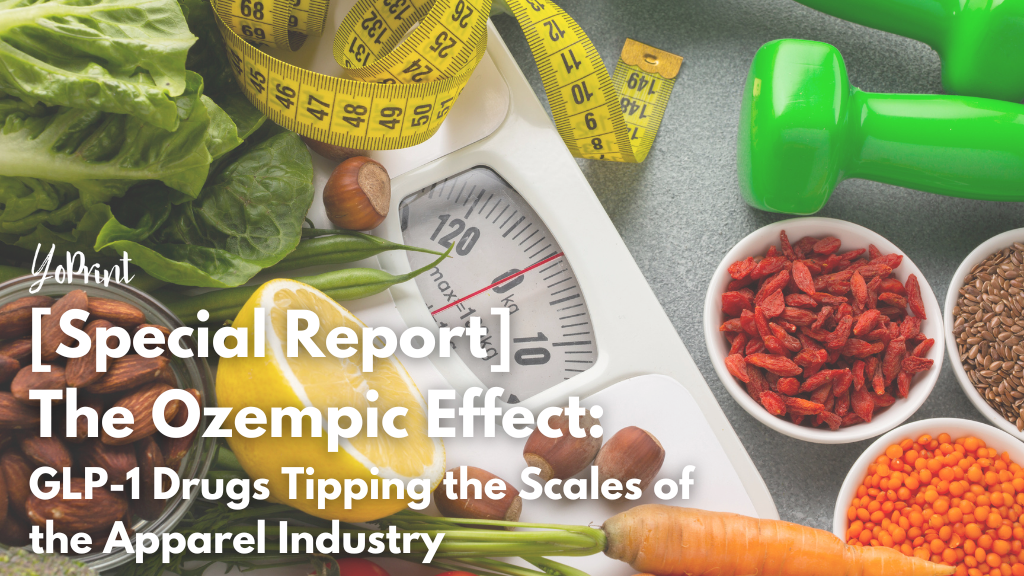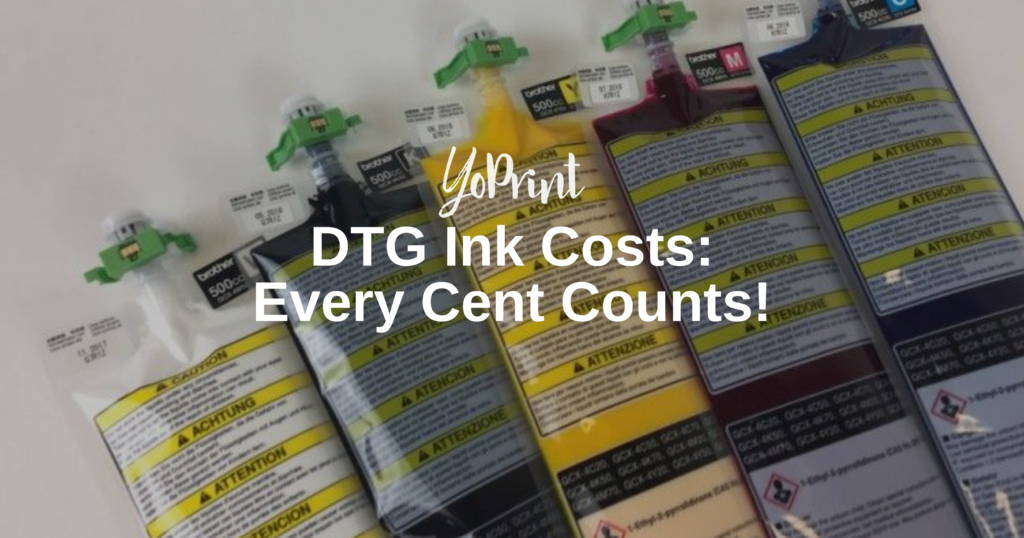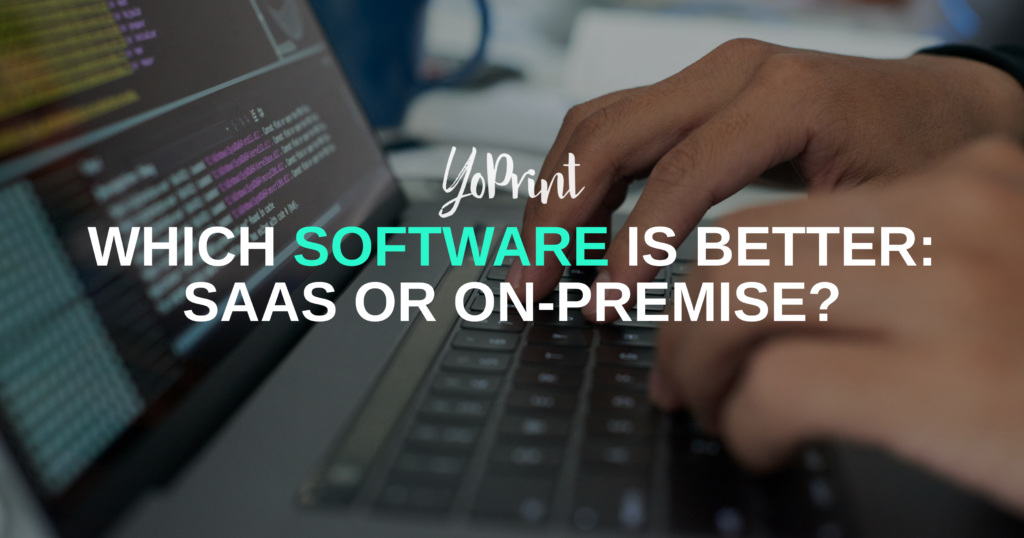From prescription aisles to closet spaces, Ozempic is reshaping more than just health landscapes—it’s setting new trends in the apparel industry. Following our initial overview, the ongoing profound impacts of this unofficial weight loss drug demand a deeper exploration. This report delves into how Ozempic is altering consumer behavior and revolutionizing fashion norms.
KEYPOINTS
- Ozempic has taken the consumer market like a storm, originally for diabetes, but more popular for weightloss
- Predicted to spread like wildfire in a decade, resulting in significant decrease of obesity rate in the US
- Behaviour modifications due to this drug will lead to a lot of spending shifts
- Question is, in the apparel world, will plus sizes go obsolete?
Ozempic Explained: What it is, and How it Works
Before delving into the wonders of this miracle drug, let’s explore some biology and understand how Ozempic works. Administered weekly by injection, Ozempic and Wegovy are the same drug, semaglutide, sold under different brand names by Novo Nordisk.
Another manufacturer, Eli Lilly, sells it under the name Mounjaro and Zepbound. If you see these names in the market, they are essentially the same thing. They are all GLP-1s, a type of medication that is made to treat diabetic patients.
Now what are all these medical jargons and lingos?
- Wegovy, Ozempic, Zepbound, Mounjaro – are all brand names for a drug formulation that mimicks the glucagon-like peptide-1 receptor agonists, which will be referred to as GLP-1.
- GLP-1 is a hormone that is naturally produced in the body after eating, to help regulate blood sugar levels. It works by stimulating insulin release in response to high blood sugar, GLP-1 also reduces the secretion of glucagon, a hormone that raises blood sugar levels.
- This drug formulation copies the GLP-1 hormone, and as an added benefit, it will alter food preferences and reduce food cravings and intake. Patients have reported a reduced appetite for salty, spicy, high-fat, sweet, and savory foods and found it easier to resist cravings as it curbs their appetite.
Due to these effects, it is also widely taken off label for weight management, and has taken the world, with extremely strict beauty standards, by a whirlwind. The drug has gained attention and went viral after being used by celebrities and social media influencers who have claimed to have lost weight in short periods of time. Take a weekly shot, and BAM! Weightloss!
If you think that your favourite actor or singer magically got slimmer by simply eating more greens or hitting the gym for a month or two, you might want to think again. Here are some well known people who are openly known to take Ozempic to lose weight.
Charles Barkley

Elon musk

Rosie O’Donnell

Oprah Winfrey

Ozempic’s Swift Market Infiltration
With all the hype that Ozempic has stirred on the mainstream media, we wondered how fast it will penetrate the normal household in the nearest future, and to our surprise, it won’t be soon before long until each American home will have at least heard about this wonder drug.
Numerator conducted a survey based on 150k consumers to study the awareness, usage and also if these people would even consider using GLP-1 for weight management.
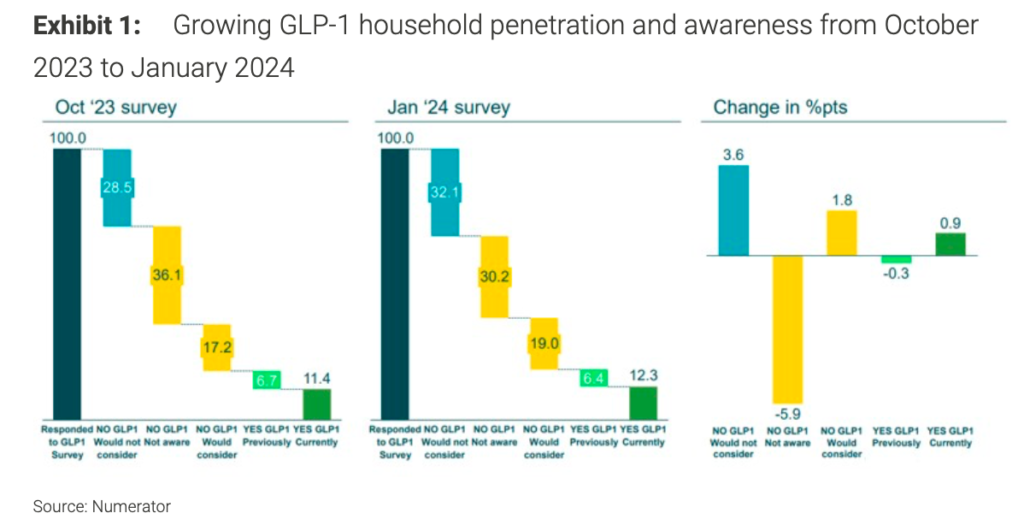

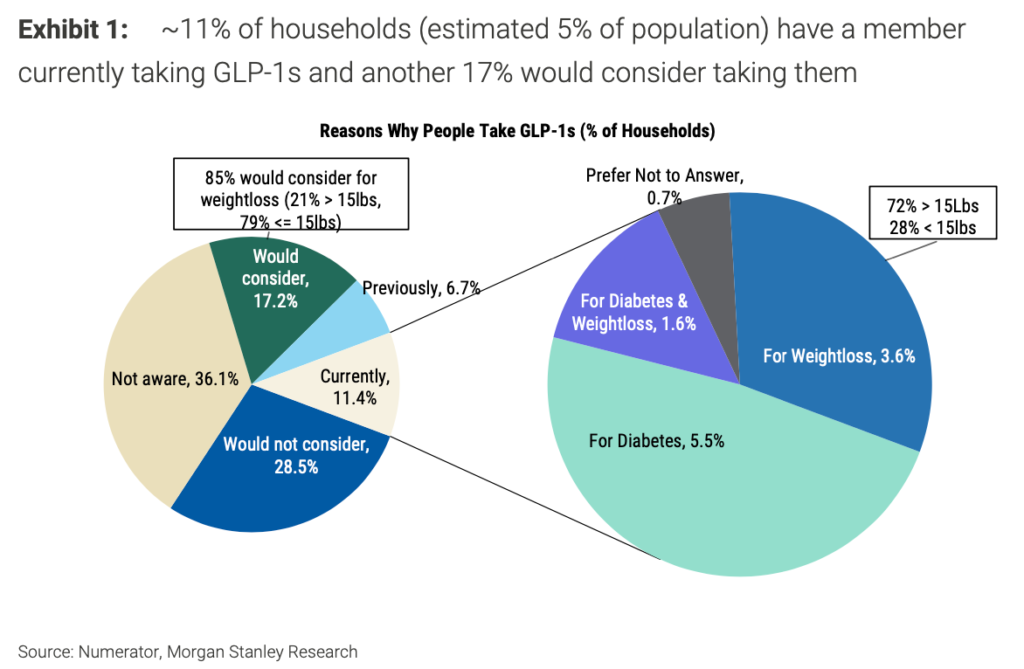
As of January 2024 12.3% of households indicated that they had a member taking GLP-1s, up from 11.4% in October 2023. An estimation of 4-5% of the US population is currently using GLP-1s, and 1-2% from this percentage is using it for weight loss.
When one household member has been on GLP-1s for an extended period of time, another member is likely to take it too, and if we look at the charts, a lot of people are considering to try the drugs with losing weight in mind. If you ask why this happens, we’ll say its because the results are visible and fast, they can physically see that their family member are getting good results. Talk about influence.
Still Skeptical? Supplies are Running Out!
Now we’ll be completely honest. At first, we too contemplated whether Ozempic would just be a temporary surge in demand. However, it’s becoming clear that it is here to stay, and not for just a mere year or two. It is poised to grow even bigger and will maintain a solid presence in the market for the long haul. We strongly believe now that Ozempic, or any other brand names it is sold as, are set to be a key indicator of future market trends.
Here’s why we think so.
Ozempic’s sticker prices currently cost up to more than $1,000 a month, and even without insurance coverage, people are still on the hunt for it to lose weight as if no out of pocket costs are needed. Sounds crazy, right?
In the quest for slimmer silhouettes, they’re willing to weigh the cost. Literally! If you’re thinking that we’re weighing down the facts, pun intended, take a look at how Mounjaro is currently facing limited supply due to extremely high demands.

Novo Nordisk and Eli Lilly have squeezed their production efforts to address this issue. However, they’ve still fallen short of producing an adequate supply to match the high demand. It seems that patients taking the drugs will face even longer delays than expected before they can replenish their supplies, possibly extending to later this year.
Why, you’re asking? More people are seeking prescriptions for these medications regardless of how astronomically priced it is. According to the IQVIA Institute for Human Data Science, about 3.8 million people in the United States, are now taking weight-loss drugs. That’s four times the number two years ago. Surreal, right? We know, our eyes almost popped too.
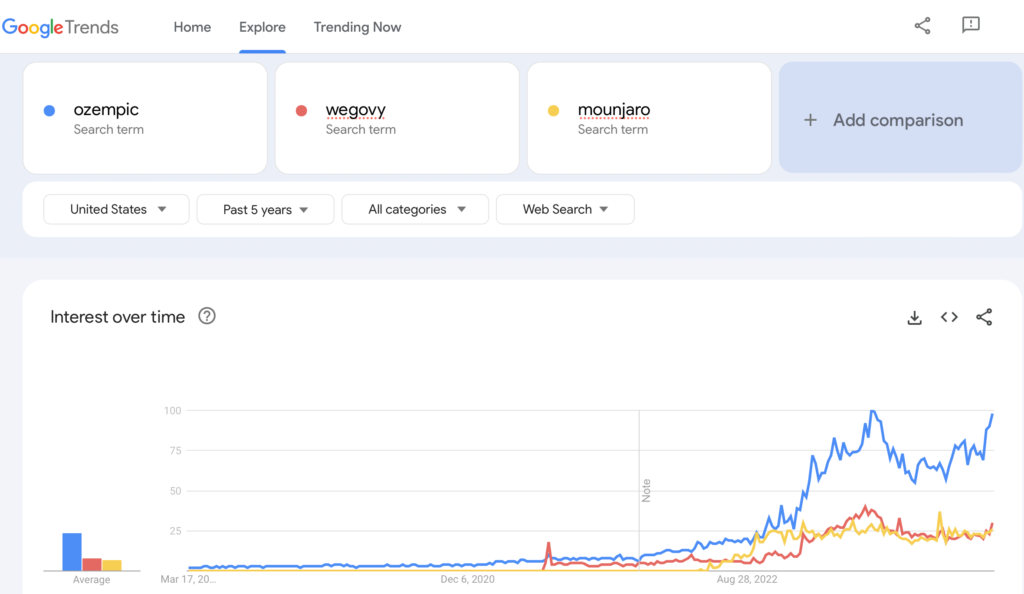
Looking at this trend on how invested Americans are currently towards these weight loss drugs and how the interest has grown across just a few years, it is no doubt that it will just keep on spiking in years to come. The numbers have spoken and looks like they are telling the truth. We’ve said this before and we’re saying it again – Ozempic is not just a hype or a fleeting trend, it will change habits and shake many industries down the road. This reshape won’t be little and will really leave exceptional dents to the consumer market.
Why? Good question.
The Ripple Effect of the Ozempic Storm
When a major part of society is already under the influence of weight loss, we will start to see changes in behaviour and spending shifts. Losing weight will alter the dynamics of the consumer market.
It is only natural that individuals who are overweight or obese experience a higher level of food-related distractions, or in other words, food noise, compared to those of a healthier weight, which likely contributes to weight gain or challenges in shedding the extra pounds. Closely tied to the brain’s reward system and its influence on hunger and cravings, weight loss medications aim to curb appetite and modify the communication between the gut and the brain, leading to prolonged feelings of fullness. The opportunity to dial this down while on such medications provides a window to adapt improved eating habits and make better food choices.
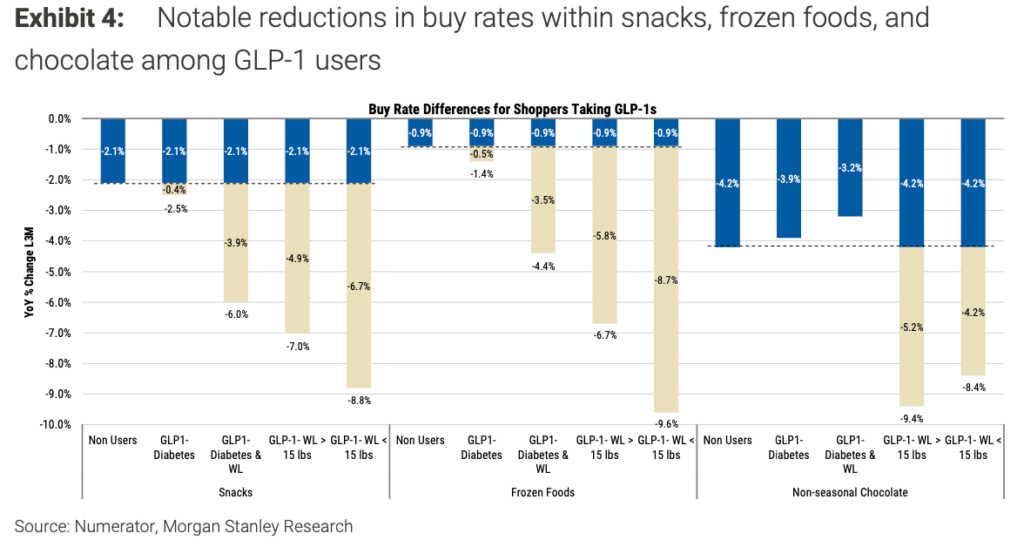
There is a significant change in consumption of less healthy categories as people taking GLP-1s for weight loss tend to reduce their consumption of high sugar and high fat foods. Those who are taking GLP-1 drugs to lose weight are exhibiting a much larger reduction in their consumption of snacks, frozen foods, chocolate, and soft drinks compared to non GLP-1 users.
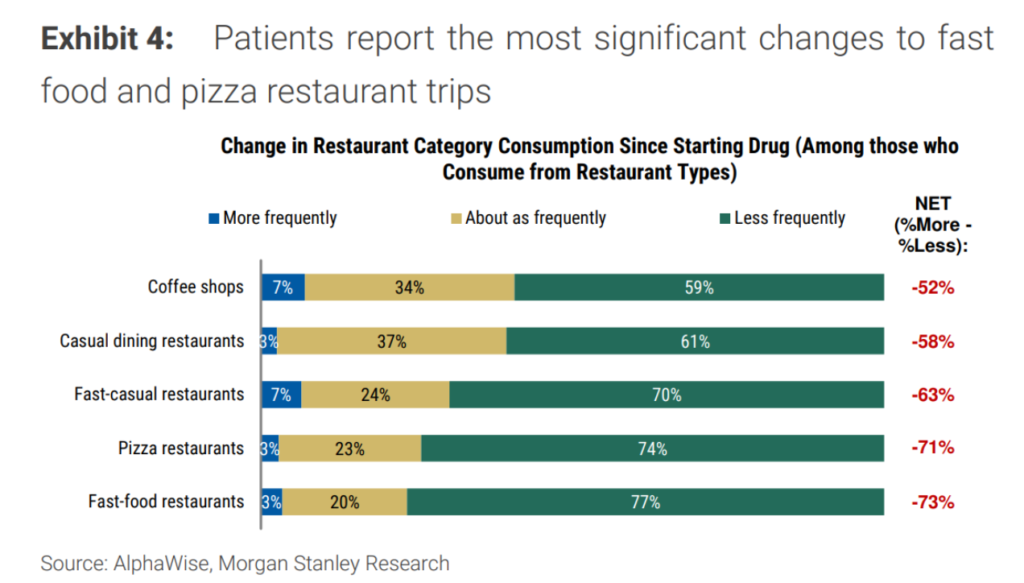
In simpler words, taking weight loss drugs, will modify your behaviour and one clear cut from this is that it will directly lead to more consumption of healthier foods. Be careful fast food chains!
With that being said, other unhealthy lifestyle contributors such as alcohol and tobacco producers might see a turn down town too. Patients taking weight-management drugs report suppressed desire to drink alcohol and smoke cigarettes.
In the far future, we might not see obese kids in the playground anymore. Since this modified behaviour among consumers will eventually become a lifestyle, younger children will grow up with better health prospects. Obesity might just be a medical condition instead of a norm, as it currently is. On that note, sedentary living will no longer be the way to go. More people are going to be implementing a healthier and much more active way of life.

In a study by Morgan Stanley Research, a survey revealed an interesting trend — after starting on weight loss medications, people began to exercise more. Initially, only 35% of those surveyed exercised weekly, but this number climbed to 71% once they were on the medication. It was as if taking the medication encouraged them to take more steps, literally, toward their health.
What’s really driving this? It may be a form of an old joke — “I’d like to go to the gym, but I need to get in better shape first” — or perhaps as people lose weight, they simply feel both more fit and more mentally motivated to exercise more to compound the benefits they are seeing from weight loss medications.
All these lifestyle changes will start to reflect physically along the road. Losing weight, eating healthy will eventually result in clear skins and looking good. What’s next on the list? Showing it off, of course! We’re predicting a surge in apparel spending, and great looking ones at that, too.
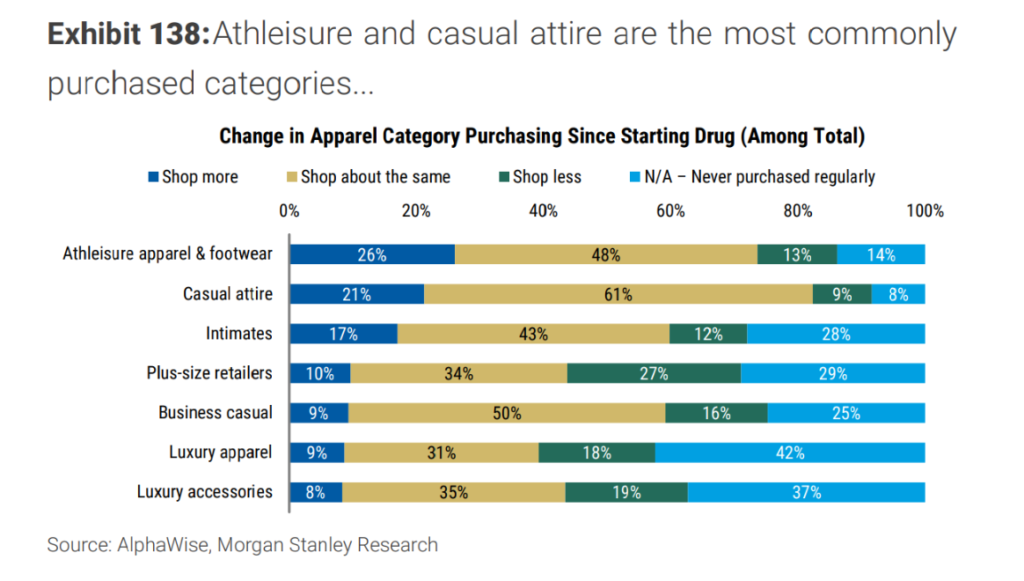
Analysts predict that the buzz around these medications could be lucrative for the apparel industry, with consumers expected to further invest in enhancing their beauty and health. Now, when this happens**, we will see a positive spike in apparel,** especially those that highlights the bodyshape.
While we’re on the page of clothes, one of the main questions to ask is that should this phenomenon go on longer than expected, will the apparel industry be directly affected? You bet.
How Ozempic Impacts the Apparel World
Let’s be real, when you’ve spent so much resources to trim the excess fat, you’re going to want to show the body you’ve worked so hard for. The rapid adoption of these GLP-1 medications will not only be a healthcare phenomenon but also a catalyst for significant shifts in the apparel industry. As these drugs become more prevalent, their impact extends beyond the medical field. Fashion will be more fast paced as the industry will need to keep track of trends that are much more figure flattering as consumers are more confident with their physiques. The demand for new, well-fitted clothing will go skyrocketing—and indeed, it already has.
Changes are Already Happening
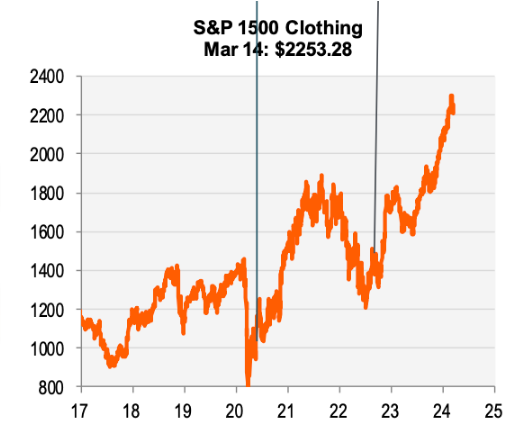
The initial reaction of GLP-1s penetration in the fashion industry is that the trend would primarily benefit mainstream fashion retailers, leaving plus-size clothing stores to face declining demand, and currently that is exactly what is going on. S&P 1500 Clothing stock has risen massively which indicates that we’re starting to see a vibration in demand for clothing overhauls.
Which leads us to the next question, what about plus size clothing?
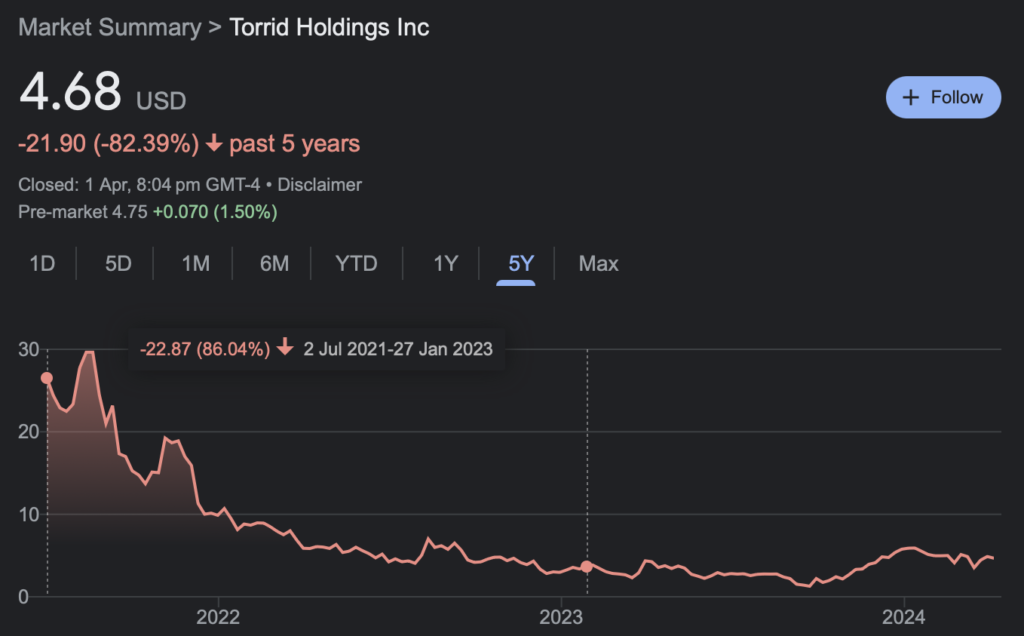
Its no longer a prophecy from a crystal ball to say that “Ozempic might affect the plus size industry,” We can see that the GLP-1 drugs has already taken one of its victims down. Torrid Holdings, a plus size fashion company has seen a significant drop since 2021. If you’re thinking what we’re thinking, it is indeed around the same time when Ozempic exploded in the mass market. Will plus sizes go obsolete? Maybe not completely in the nearest future, but it will definitely leave a noticable scar in the near term as the demand for figure flattering clothes will continue to climb for the next decade or so.
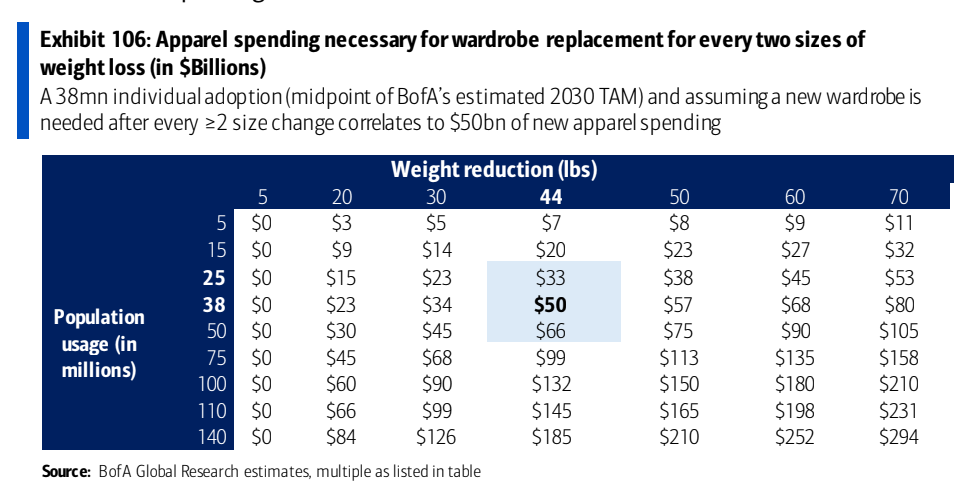
So gear up apparel shop owners, Ozempic has taken the country by a storm and will continue to do so for the next few years or even decades. It will begin to reshape the apparel industry in more ways than one, and to see the full blow of its impact is only a matter of when, not even an if as the spending shifts have already started. Apparel businesses will definitely thrive to keep up with the constant growing demands of fast fashion and endless wardrobe updates for the slimmer consumer market.
We’re Only at the Starting Line, More is Yet to Come
This is arguably just the beginning of a change. As studies have shown that there’s a barrier to injecting drugs compared to simply swallowing a pill. For those who fear injections, and might be waiting for the pill-form to actually try Ozempic, rejoice, as it is predicted to be launched some time in 2025 or 2026, and when that eventually happens, we will see a dramatic swell of those taking the medication for weight loss.
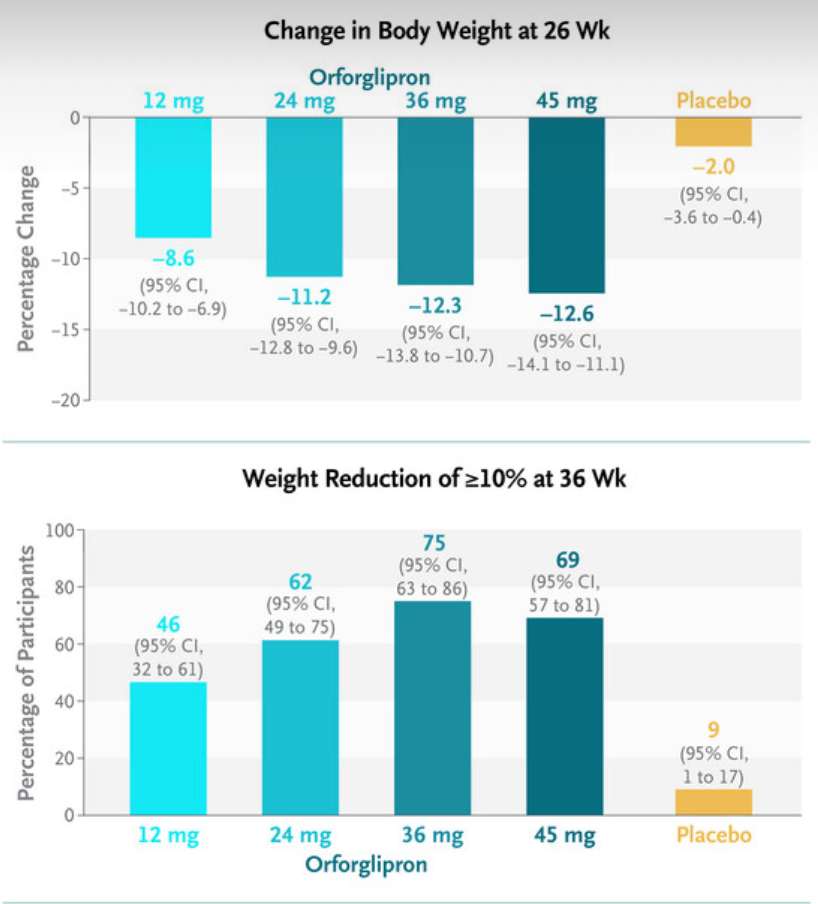
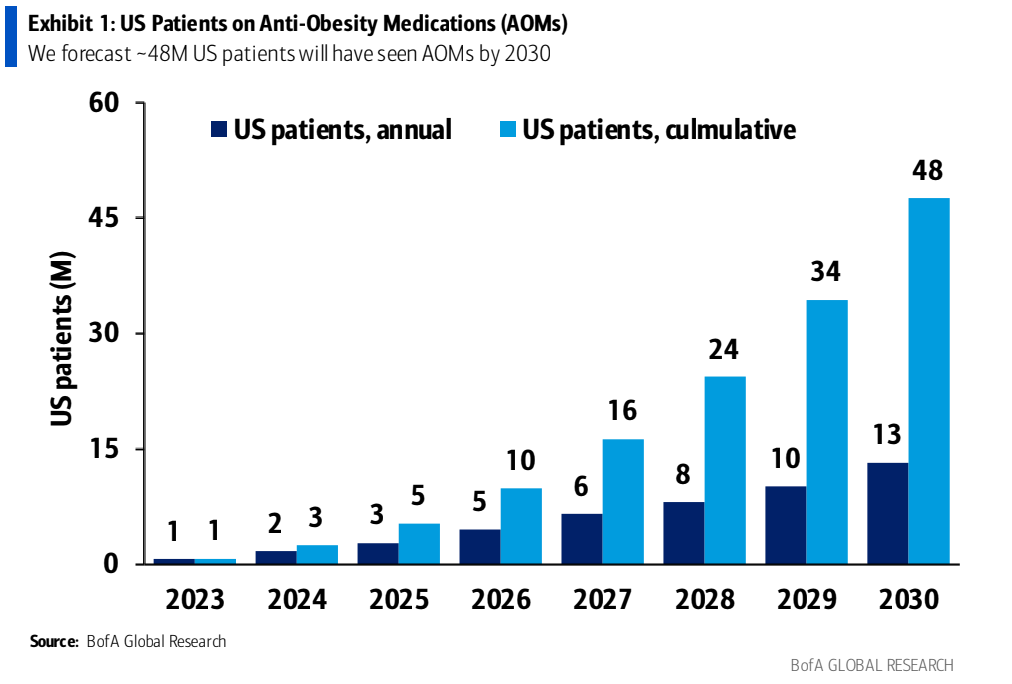
By 2026, it’s predicted that 10 million people in the US will have used a GLP-1 drug for losing weight, and this number is expected to grow to about 48 million by 2030. However, this will still only represent 17% of all adults in the US, indicating there’s a lot of potential growth for even more people to start using these treatments, especially with the pills’s imminent arrival.
Considering the fact that even without the pill form, people are still going crazy and going on what feels like a treasure hunt for this drug, imagine when the pill version of Ozempic, which is most likely to be a lot less expensive than the current injectables hits drugstore racks. It’s going to be wild! At that point of time, you can go ask any Tom, Dick or Harry, and they will associate Ozempic to weight loss, even more than diabetes. Heck, they might even know someone who takes it, or surprise, surprise be a user themselves.
If you thought society was viscious in the name of beauty, health and fashion trends before, wait until everybody finds out about this remarkable revolution, and has direct access to the miracle of weight loss with just an injection pen, even more so with the pill on the way – one word, boom!
